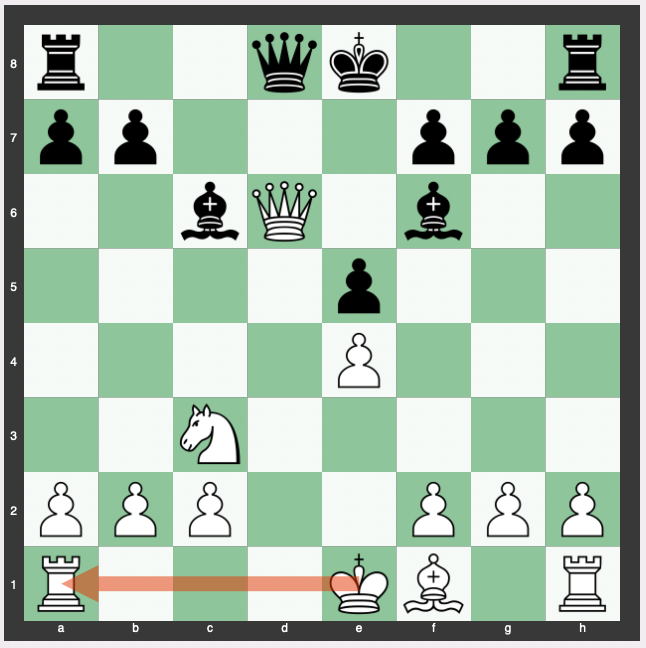Can you castle on both sides of the board in chess?
Yes, in chess, you can castle on both the kingside (short castle) and the queenside (long castle), but not in the same game with the same king.
Below we more deeply explore the rules and limitations of castling, and provide insights into this intriguing chess move.
Understanding Castling in Chess
Castling is a special move in chess that allows the player to move their king two squares towards a rook on the same rank, then move the rook to the square next to the king.
This move is unique because it allows the player to achieve two important goals simultaneously: protecting the king by moving it to a safer position and activating the rook by bringing it closer to the center of the board.
Castling is subject to certain rules and limitations.
The following are the key rules for castling:
- Castling can only be done if neither the king nor the rook involved in the move has previously moved.
- There cannot be any pieces between the king and the rook.
- The king cannot be in check, nor can it move through or into a square that is attacked by an opponent’s piece.
These rules ensure that castling is a fair and strategic move, and not something that can be abused or exploited.
However, these rules also mean that castling on both sides of the board simultaneously is not possible. Let’s explore why.
Limitations of Castling on Both Sides
While castling is a powerful move, it is important to note that it can only be done once per game.
This means that once a player has castled, they cannot castle again, regardless of which side of the board they castled on.
This limitation is in place to prevent players from repeatedly castling to avoid threats or gain an unfair advantage.
Additionally, castling on both sides of the board simultaneously is not possible due to the rules of chess.
The key limitation is that there cannot be any pieces between the king and the rook during the castling move.
Since there are only two rooks in a standard chess game, one on each side of the board, it is not possible to have both rooks available for castling at the same time.
Furthermore, the king cannot move through or into a square that is attacked by an opponent’s piece.
This means that if the opponent has pieces attacking the squares that the king would need to pass through during castling, the move is not possible.
Since the squares the king needs to pass through are different on each side of the board, it is not possible to simultaneously castle on both sides.
Examples
Let’s take a look at a few examples and case studies to further illustrate the limitations of castling on both sides of the board.
Example 1: Castling Queenside
As is common for white in many Sicilian structures, white often castles queenside, which allows for a pawn storm on the kingside (where black normally castles).

Example 2: Castling Kingside or Queenside
Here, black has the chance to castle both kingside or queenside.
Based on the side that offers the most protection and gets out of the way of any possible direct threats, castling queenside is more accurate in this case.

FAQs – Can You Castle on Both Sides of the Board in Chess?
Can I castle on both sides of the board in a single game?
No, you can only castle once per game, regardless of which side of the board you choose to castle on.
Can I castle on the kingside and queenside in the same game?
You can only castle on one side of the board in a single game. You must choose either kingside or queenside.
Can I castle if there are pieces between my king and rook?
No, you cannot castle if there are any pieces between your king and rook. The path between them must be clear.
Can I castle if my king is in check?
No, you cannot castle if your king is in check. The king must not be under attack in order to castle.
Can I castle if the squares my king passes through are attacked by my opponent’s pieces?
No, you cannot castle if the squares your king passes through during the castling move are attacked by your opponent’s pieces.
Can I castle if my rook has moved previously?
No, you cannot castle if either your king or rook involved in the move has previously moved.
Summary – Can You Castle on Both Sides of the Board in Chess?
Castling is a powerful move in chess that allows the player to protect their king and develop their rook simultaneously.
However, castling on both sides of the board in a single game is not possible.
The rules of chess limit castling to once per game and require a clear path between the king and rook, as well as the absence of threats from the opponent’s pieces.
Understanding these limitations is crucial for players to make strategic decisions and utilize castling effectively in their games.

